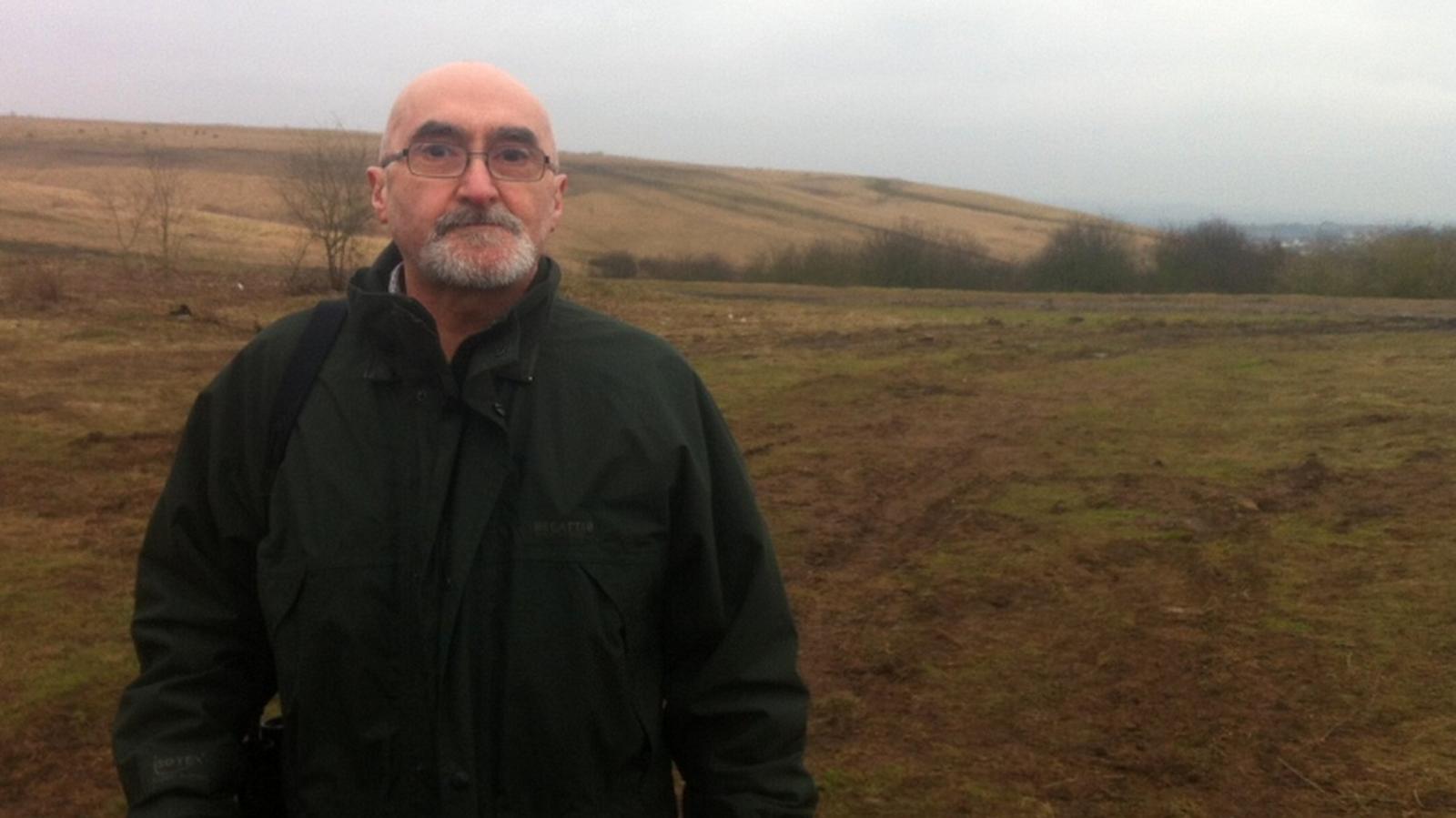Gedling Colliery miners mark 25 years since pit closure
- Published
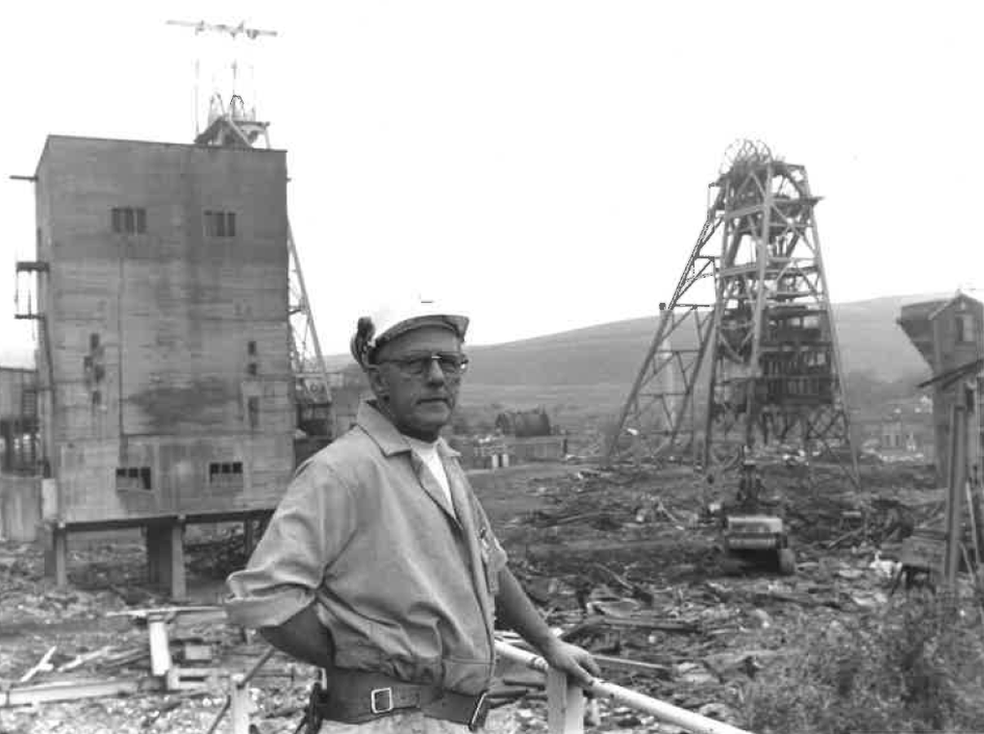
Graham Tavner was one of six people from the colliery staff who remained to help with site security during demolition in 1992
About 200 former miners from one of the UK's biggest coal mines have gathered to mark the 25th anniversary of its closure.
Coal was last extracted from Gedling Colliery, in Nottinghamshire, on 7 November 1991.
During its operational life it became known as the Pit of Nations due to the diverse workforce.
A commemoration was also held to remember the more than 120 miners who died in the pit over its lifetime.
Experts understand Gedling to have been one of the biggest mines in terms of manpower, employing about 2,000 men in the 1950s and 1960s.
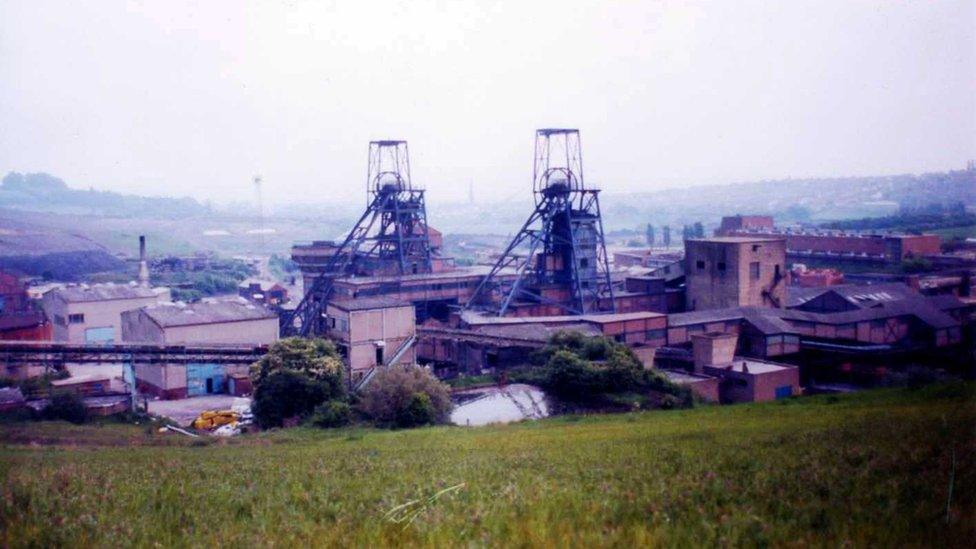
Gedling Colliery's headstocks loomed large over the town
Graham Tavner, who began working at Gedling Colliery in 1956 as an apprentice, said it was a special community.
"We'd got 25 different nationalities down the pit," he said.
"For example, we had Jamaican miners - can you imagine leaving a beach in the Caribbean to come and work in a pit in Gedling?
"It was brilliant, when you talk to miners today, they say they miss the 'craic'.
"We just took the Michael out of each other."
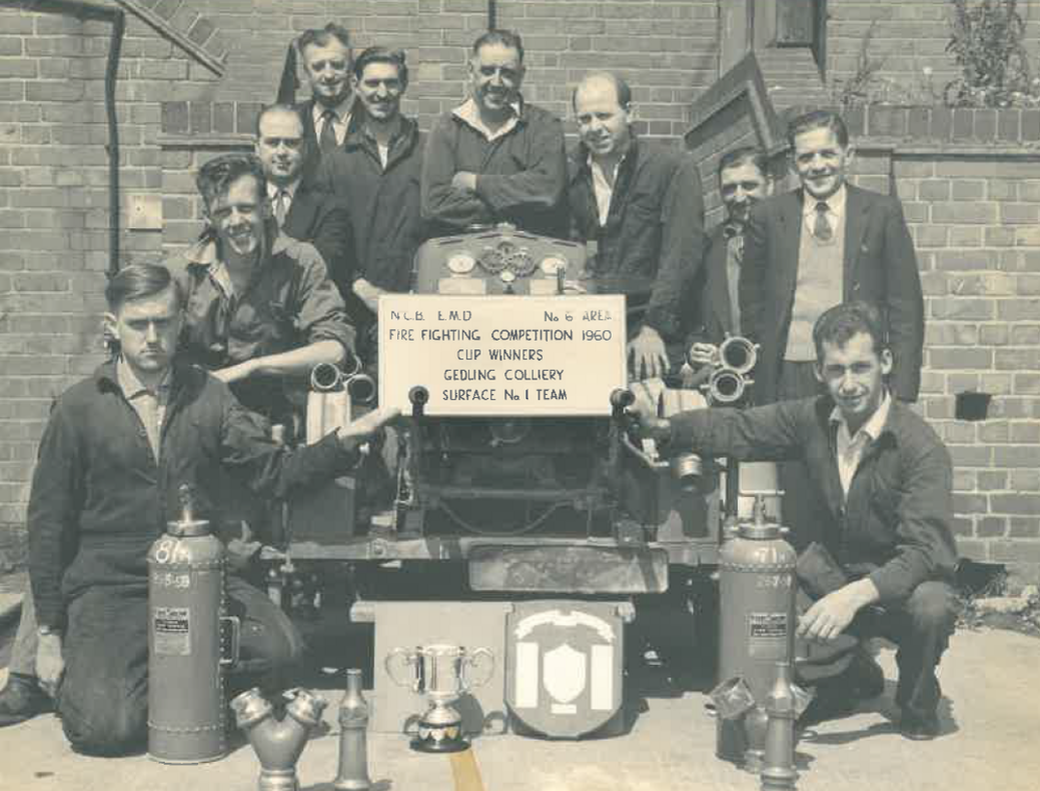
Graham Tavner (second left) said regular competitions against other collieries helped with camaraderie

Gedling Colliery's banner references the diversity of the miners who worked in the pit
Although production ended in 1991, Gedling had been identified as one of three mines in the early 1980s that could have had a "long term" future.
It was because Gedling, along with Calverton and Cotgrave, were on the eastern side of the South Nottinghamshire coalfield and had richer resources to exploit.
However, the deal between the regional management of the National Coal Board and the local branch of the National Union of Mineworkers did not come to pass.
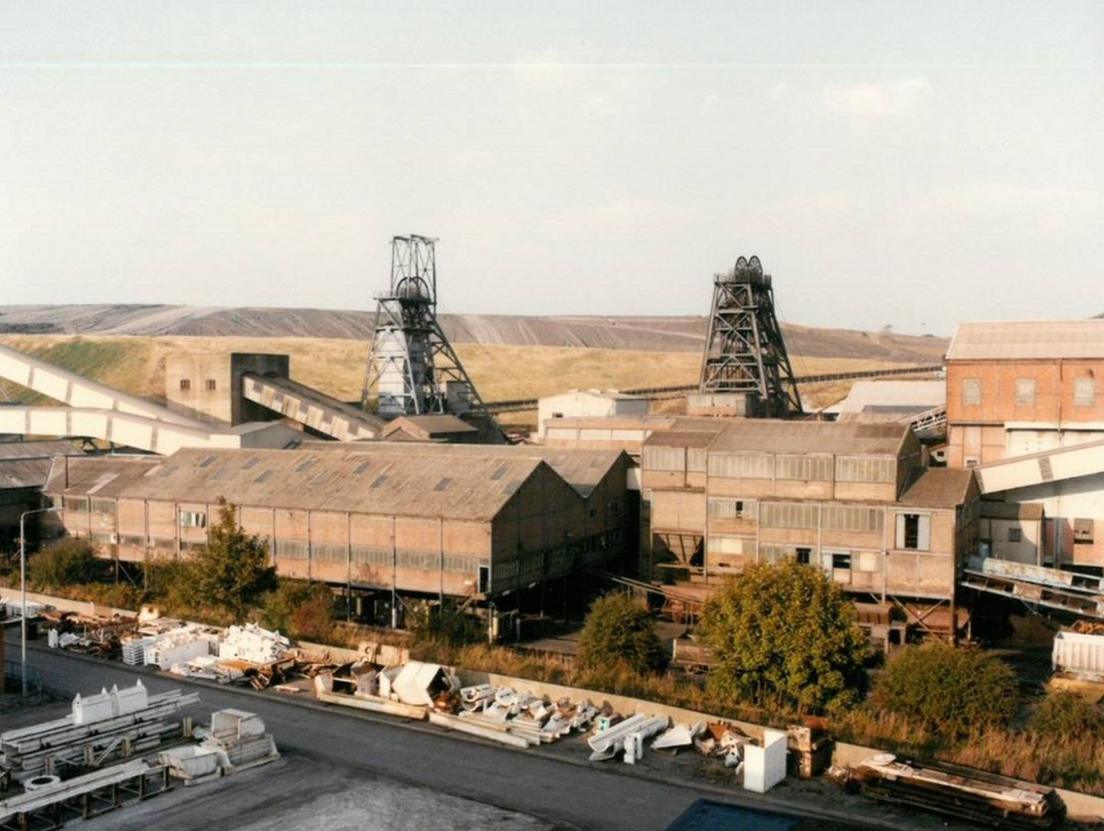
Miners would head 1,200ft (about 360m) underground to reach the coal
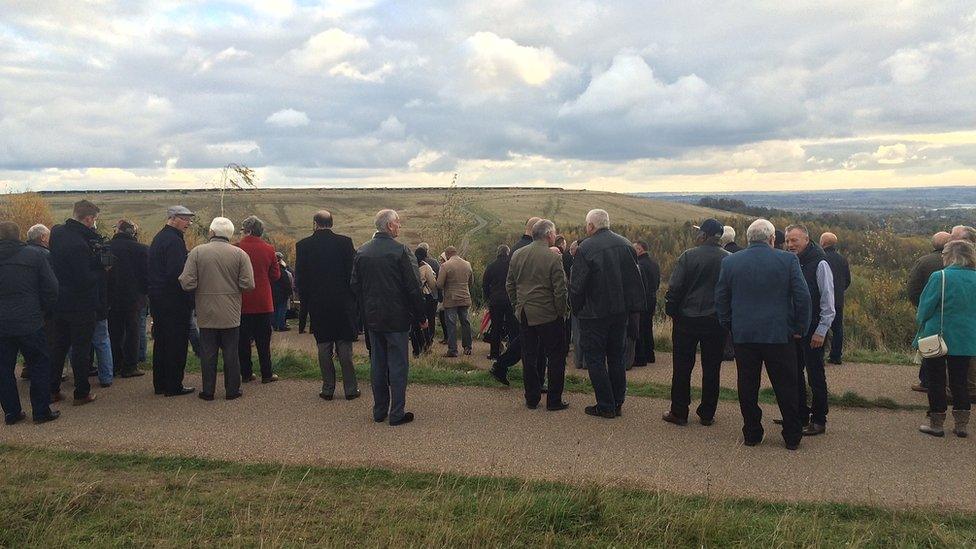
During their return visit to the site, miners toured the memorial gardens and saw plans for a new visitor centre.
They were joined by Gedling MP Vernon Coaker for a special commemorative event at the Gedling Miners Lamp, a memorial to those who died working at the pit.
- Published12 September 2016
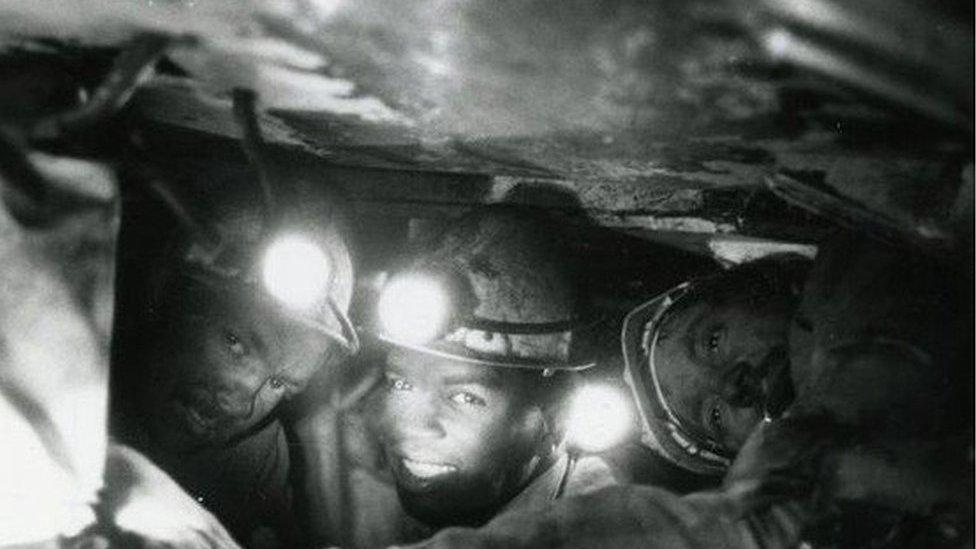
- Published7 June 2015
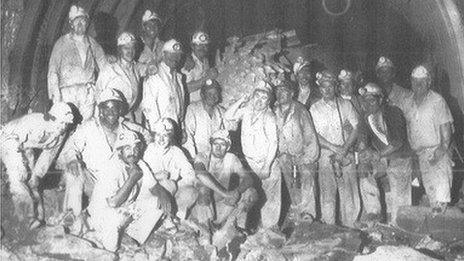
- Published28 March 2015
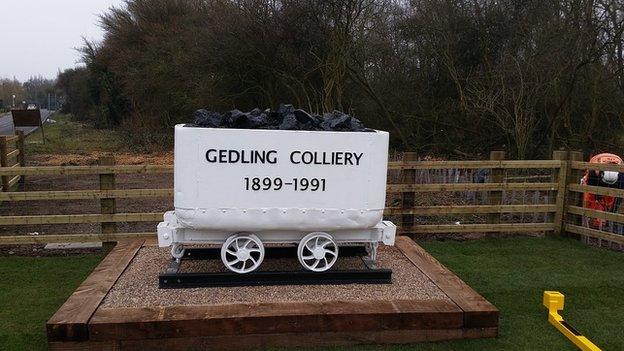
- Published3 February 2014
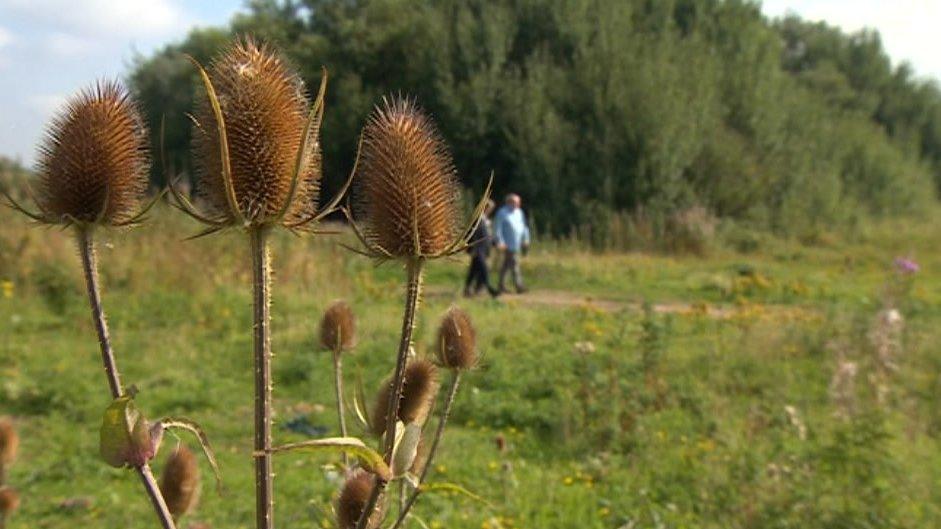
- Published14 March 2013
